Plastor’s stacking boxes go on display at Tate Modern
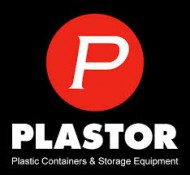 Plastor Limited, a leading Berkshire based distributor of plastic containers and storage equipment, made art history when their stacking boxes went on show for four days at the Tate Modern, the sixth most visited art gallery in the world, over the Late May Bank holiday weekend.
Plastor Limited, a leading Berkshire based distributor of plastic containers and storage equipment, made art history when their stacking boxes went on show for four days at the Tate Modern, the sixth most visited art gallery in the world, over the Late May Bank holiday weekend.
Plastor’s 15 minutes of fame arrived when Plastor’s marketing manager, Neil Harris received a phone call from Bruno Ceschel, founder of ‘Self Publish, Be Happy.’ Mr Ceschel wanted to discuss a “fantastic” opportunity for Plastor, in which some of Plastor’s core products would take centre stage at the Tate Modern. He explained that Self Publishing, Be Happy’ (SPBH) is an organisation that collects, studies and celebrates self-published photo-books and that the Tate Modern had sponsored his organisation to occupy 100 square metres of their huge Turbine Hall as part of a publishing fair known as ‘Offprint, London’.
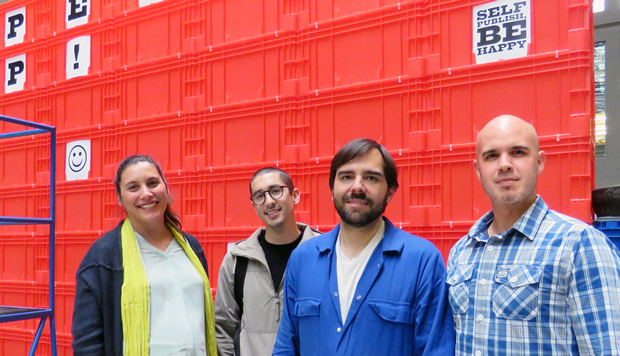
Given that the Tate Modern is one of the most visited art museums in the world it was too tempting for Neil Harris to ignore: “It sounded like a once in a lifetime opportunity for Plastor. The Tate group of galleries is also a regular customer of Plastor, adding interest to the intrigue. In fact, when Bruno first made contact with us, it was initially believed that it was a general sales enquiry from the Tate, which helped Mr Ceschel in his approach.“
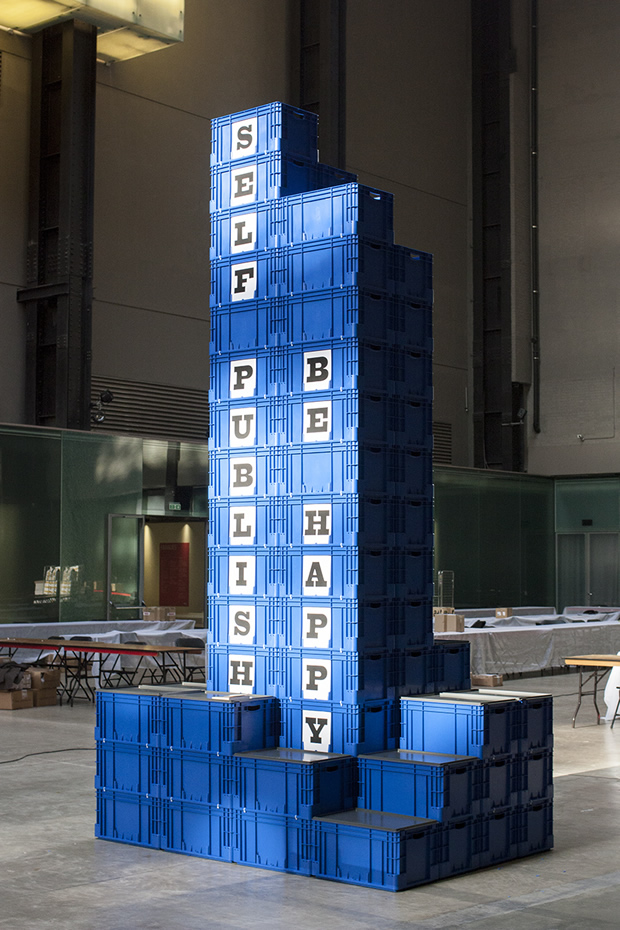 Neil Harris was intrigued by the left-field opportunity and invited Bruno to Plastor’s headquarters in Maidenhead, Berkshire to see a range of boxes and discuss the event in more detail.
Neil Harris was intrigued by the left-field opportunity and invited Bruno to Plastor’s headquarters in Maidenhead, Berkshire to see a range of boxes and discuss the event in more detail.
When Bruno visited Plastor he explained that the designated SPBH space had been designed by two celebrated architects Ana Varela and Phillipe-Albert Lefebvre. They loved Plastor’s stackable plastic boxes and wanted to use them to build the SPBH space. The architects wanted to capture the ‘Self Publishing, Be Happy’ do-it-yourself ethos, utilising the boxes as building material for furniture and architectural elements, such as large impacting walls and tables. The space was designed entirely of readymade materials, with 300 large stackable plastic containers forming the walls; creating a fun and ‘poly-functional’ environment.
Neil Harris comments: “The reason Plastor’s boxes were loved so much is because of their multiple uses – they can be reused to carry, store and transport books and artwork. As a material it made perfect sense in the context of a fair that celebrated books, and indeed made even more sense for the organisation that was founded upon a very DIY spirit.
“We invited Bruno to our headquarters to discuss the opportunity in more detail. He arrived with the initial floor plans and explained his intentions in further detail. Having studied graphic design at university I already knew the importance of the Tate Modern, not just as a London art gallery but as a world-renowned gallery – it was quite simply an opportunity I couldn’t ignore. Also, by having the floor plans I could see just how impacting our products would be within the space. Plastor’s Managing Director, John Yates, and I agreed to support Bruno and offered three hundred boxes in blue and red to create his vision.”
Neil continues: “Both John Yates and I visited the Tate Modern over the weekend to see our boxes in all their glory. We loved what we saw: the boxes dominated the huge area within the Turbine Hall, which is located right by the Tate Modern’s entrance. The area was bustling with people and full of activity, and with the backdrop of our blue and red containers, it looked quite spectacular.
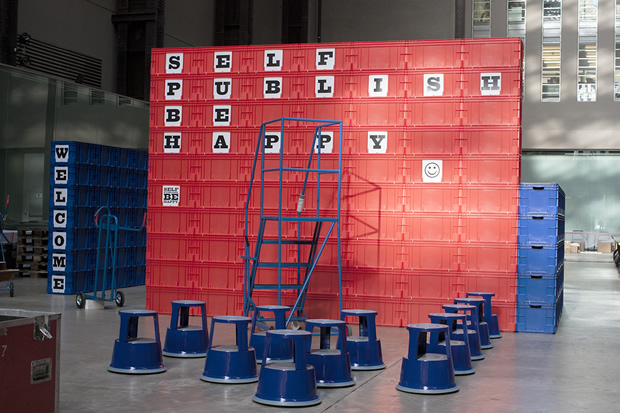
“Along with tens of thousands of other people I had also been following all the SPBH social media feeds via Twitter, Facebook and Instagram so I could see just how effective our boxes looked as they were being set up and after the launch of the event. There were huge towers and walls made out of our boxes. The walls purposely formed a special room, which acted as a platform for artists to demonstrate their work, give speeches and stage interactive performances. Some of the boxes were also used to create a stand, which also advertised and sold books. The boxes themselves also have integrated label holders both on their sides and ends, which the designers took advantage of by inserting letters and symbols to provide messages for visitors, all of which changed on a regular basis. The show was an obvious success for Bruno and his organisation and a lot of fun for us to be part of. I was extremely proud to be there, knowing that we helped make it happen.”
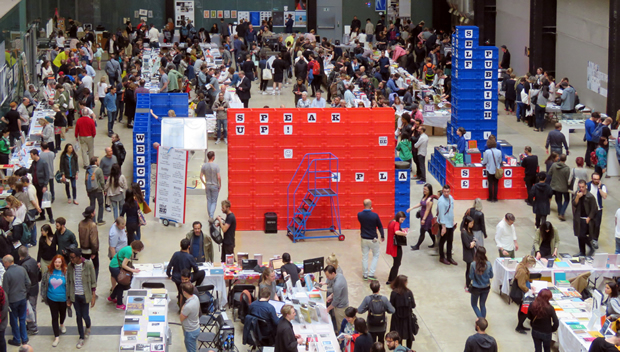
Images and details of the show are available from Neil Harris at Plastor (contact details below) or via Self Publish, Be Happy’s website, Facebook, Twitter and Instagram accounts.
You can contact Neil Harris, Marketing Manager at Plastor on 01628 829800 or via email enquiries@plastor.co.uk




Comments are closed.